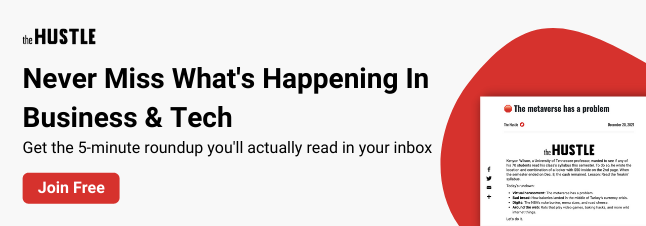The demand for remote or hybrid work models has grown considerably since the start of the pandemic. A 2023 report by Akumina found that 84% of survey respondents work remotely or in a hybrid work environment, up from 54% the previous year.
It comes as no surprise then that many businesses are looking to adopt a digital workplace to improve the employee experience, streamline processes, and reduce costs.
This guide explores the benefits of a digital workplace and five best practices you should follow to make yours a success.
Table of contents:
- What is a digital workplace?
- Digital workplace benefits
- Digital workplace best practices
- Digital workplace examples
What is a digital workplace?
A digital workplace is an always-connected instant-access environment that provides employees with all the digital tools they need to work efficiently. These tools include applications, data, and files that can be accessed from any location, on any device, and at any time.
With a digital workplace, everything is located in one place, meaning employees don’t have to switch between apps to complete a single task; they need just one ecosystem to work.
The aim of a digital workplace is to enable employees to perform their duties in a location-independent way. Fully in-office organizations can benefit from a digital workplace just as much as hybrid or remote ones.
But a digital workspace isn’t just the virtual equivalent of the physical workplace. As Ankit Prakash, founder of Sprout24, a contextual data platform, puts it, “A digital workplace is not just a set of tools. It’s the backbone that shapes the culture and efficiency of a team.”
Overall, going digital allows you to redesign business processes, automate repetitive tasks, and increase business efficiency.
Digital workplace benefits
Here are a few of the benefits of implementing a digital workplace.
Increased employee satisfaction
When data, tools, and applications can be accessed from any location and at any time of day, employees feel more comfortable working off-site. According to Buffer’s State of Remote Work 2023 report, 71% of respondents prefer a fully remote work structure. For this reason, creating a digital workplace could lead to higher levels of employee satisfaction.
Additionally, flexible working and a decent work-life balance can result in higher employee retention rates and aid in talent attraction. According to Deloitte, 77% of Gen Zs and 75% of millennials who currently work remotely or in hybrid roles would consider leaving their current employer if required to work in an office full time.
Increased productivity
In a digital workplace, employees can find the information they need much faster than in a non-digital environment. This leads to higher productivity, which in turn raises employee morale. According to a 2023 workplace report by Coveo, 88% of employees feel demoralized when they can’t find the necessary information to perform their duties.
Reduced operational costs
Reduced operational costs
Empowering employees to work from anywhere also helps you reduce operating expenses. You’ll spend less on office space and furnishings, and if you invest in a cloud-based digital workplace, you’ll eliminate the need for setting up (and maintaining) on-premises servers or expensive hardware. This frees up funds that can be allocated to other areas of your business.
Improved communication and collaboration
In a digital workplace, instant messaging, document sharing, and videoconferencing tools, like Slack, Asana, and Skype, allow employees to communicate and collaborate more effectively with each other, whether they’re across the hall or the world.
This improved communication between workers is especially important because, according to a Microsoft report, 60% of respondents felt their company should put more emphasis on culture and communication.
However, digital teams can be at risk of losing empathy and trust. As the employer, it’s essential that you help cultivate a sense of belonging among team members and take the lead in following communication best practices, like sending prompt replies and using multiple digital channels.
Digital workplace best practices
There are various factors to take into consideration if you want to create a digital workplace strategy that is effective and efficient.
1. Assess your current work environment
Before embarking on a successful digital workplace transformation, you need to evaluate your existing work environment.
By conducting a thorough analysis of the current situation, you will be able to understand the challenges employees currently face, identify gaps in your tech stack, and clarify what needs to be changed.
When assessing your work environment, ask yourself the following questions:
- What technologies are already in place?
- Do these technologies improve my employees’ productivity?
- What technology is used the most?
- Do our systems integrate?
- What gaps exist between employee needs and the tools available to them?
- What are our user personas? What are their individual use cases?
2. Define your goals
Once you’ve completed your assessment, the next step is to set clear goals.
This step involves answering questions like: “Why do you want to overhaul your work environment?” and “What do you want to achieve?”
For instance, your key goals for creating a digital workplace could be to increase employee engagement and improve current processes.
During this phase, it’s essential that you create key performance indicators (KPIs), which measure and track progress toward a specific goal. Choosing the right KPIs for your business is crucial, as they will provide valuable insights into the performance of your digital workplace and help guide decision-making for improvements and optimizations.
3. Provide employee training
If end users aren’t familiar with the new technology, how will they use it to operate more productively and collaboratively?
Make it a priority to educate users about the digital workplace and its benefits. There are various ways to go about this, including online courses, tutorials, quizzes, and how-to guides.
You can also create a network of employee advocates, also known as “change champions,” to get employee buy-in. These individuals have influence within the business and are respected by their peers. Their role is to act as in-house experts and train others.
4. Choose the right technology
To find the technological solution that suits your business needs and digital transformation goals, check out demos or case studies or talk to people in your network. Remember, the new tech will consume a large portion of your budget, so you don’t want to rush the process.
Make sure to consider team members’ different levels of digital skills when selecting the right digital workplace solution.
Scalability also shouldn't be overlooked — as you grow in size, the platform of your choice should be able to keep up with the growing demands of your business.
5. Measure success and improve
To gauge the effectiveness of your digital workplace initiatives, track and analyze the KPIs you established earlier. These KPIs can include:
- Employee net promoter score (eNPS): This metric gives you a clear indication of how employees feel about your company. It makes use of one simple question: On a scale of one to 10, how likely are you to recommend working at this company to others?
- Return on investment (ROI): For your chosen tool or technology to generate a good ROI, it should make more money than what you spent on it.
- Application adoption: This metric measures how many users engage with a specific application or tool.
Digital workplace examples
The best digital workplace platforms prioritize the end user: the employee. Below are some of the top tools in the marketplace.
MangoApps
MangoApps was created in 2008 and has multiple awards under its belt. It markets itself as an integrated intranet and employee app platform.
With MangoApps, all the essential workplace functions, like employee communication, intranet, training, and task management, are synced in one place. Moreover, it integrates with an assortment of tools like Microsoft 365, Slack, and G Suite.
What We Like:
- AI-powered chatbot to quickly address employee inquiries
- Mobile responsive
- Real-time analytics dashboard to gain insight into employee engagement levels
- 99.9% guaranteed SLA
Price: Plans start at $12 per user per month for organizations with less than 100 employees.
Workgrid
Workgrid aims to make work simpler for employees, eliminate digital friction, and modernize your existing intranet. It integrates with your business applications, including enterprise resource planning (ERP), IT, and HR tools like Jira, Oracle Cloud HCM, and Microsoft Teams.
Additionally, it offers a no-code app builder called Workshop that makes it easy to build apps quickly and cost-effectively.
What We Like:
- Real-time system notifications and alerts in a single place
- Natural language chatbot to automate tasks and eliminate data silos
- Micro apps that help employees quickly find important information
Price: Available upon request.
Wrike
Wrike is a cloud-based collaborative work management platform with over a decade of experience. Its collaboration tools are suitable for a wide range of teams, including marketing, project management, IT, and engineering.
What We Like:
- Mobile and desktop apps that allow employees to work from anywhere
- Automation to eliminate manual tasks
- Project dashboards to assess project and team progress in real time
- Resource management tools to efficiently manage projects
- Integration with over 400 apps
Price: Free. Paid plans start at $9.80 per user per month for teams between two and 25 employees.
Implementing a digital workplace can result in productivity gains, cost savings, and higher job satisfaction for employees.
If you want to achieve these benefits, you'll need to consider best practices like providing employee training to ensure a successful transition, as well as which KPIs to formulate to help guide your decision-making when improving your employees’ digital workplace experience.

.png)









![Here‘s Everything I’ve Learned About Internet Marketing [Data + Expert Tips]](https://53.fs1.hubspotusercontent-na1.net/hubfs/53/internet-marketing-1-20250128-2273831.webp)

![24 Digital Marketing Tips That HubSpot Swears By [Research]](https://53.fs1.hubspotusercontent-na1.net/hubfs/53/digital-marketing-tips_0.webp)
![How Performance Marketing Works [+ 6 Tools You Can Use]](https://53.fs1.hubspotusercontent-na1.net/hubfs/53/performance%20marketing.webp)
